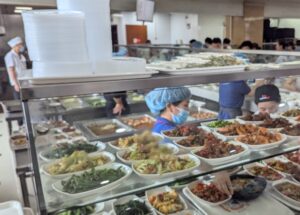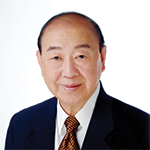Cost of Care

Food options in the hospital cafeteria for workers, all freshly prepared on site. (Click to enlarge.)
China provides universal medical insurance, which covers 96% of the population, more than 1.36 billion people.6
I observed that the cost of healthcare in China is strikingly transparent. A typical outpatient visit costs around ¥15 CNY (approximately $2 USD), and for expert outpatient services, it ranges from ¥25–200 CNY ($3.50–27 USD).
Medications, lab services and imaging all have clearly listed prices. Doctors can easily discuss the costs of different management options with patients—an approach that’s rare in the U.S., where costs can vary widely depending on a patient’s insurance.
The doctors at SRRSH can discuss treatment costs with patients, even sharing specific prices for medications like rituximab. This allows for more informed patient decisions than in the U.S., where we often can’t offer such clarity due to the complex insurance landscape. On the other hand, it can be argued that when it comes to health, patients should not have to consider cost.
Trainee Pathway
In China, following graduation from high school, prospective doctors study medicine and complete an internship in college. Xu Cheng, MD, described the post-graduate rheumatology training:
“In China, the competition among medical students is extremely fierce. For example, to join the rheumatology and immunology department at SRRSH, a medical student typically needs to complete five years of undergraduate study, followed by three years of masters [studies] and three to four years of doctoral research. During this, they must obtain a clinical physician qualification certificate and a resident standardized training certificate. This requirement is not unique to SRRSH; it is the standard recruitment criteria for most university affiliate hospitals.”
To obtain these certificates, students must complete either clinical or research requirements, as well as standardized testing.
After entering the rheumatology department, they spend three years as a resident and at least five years as a fellow. Senior fellows often lead the team or have their own clinic. They make treatment decisions largely independently, functioning similarly to a junior attending in the U.S. context. Fellows must complete a significant research requirement to become the Chinese equivalent of an attending. (The terminology for medical titles in China and the U.S. may not correspond exactly.)
I asked my colleagues why they chose rheumatology and many cited its complexity, fascinating pathophysiology and challenging cases. One trainee remarked, “The diagnostic process is like solving a mystery,” adding “perhaps I would also be well-suited to being a detective.”


